Academic Planning
Student Profile – Omar Dixon, Jr.
May 1, 2022Student Profile
Jocelyne L. (St. Petersburg High School)
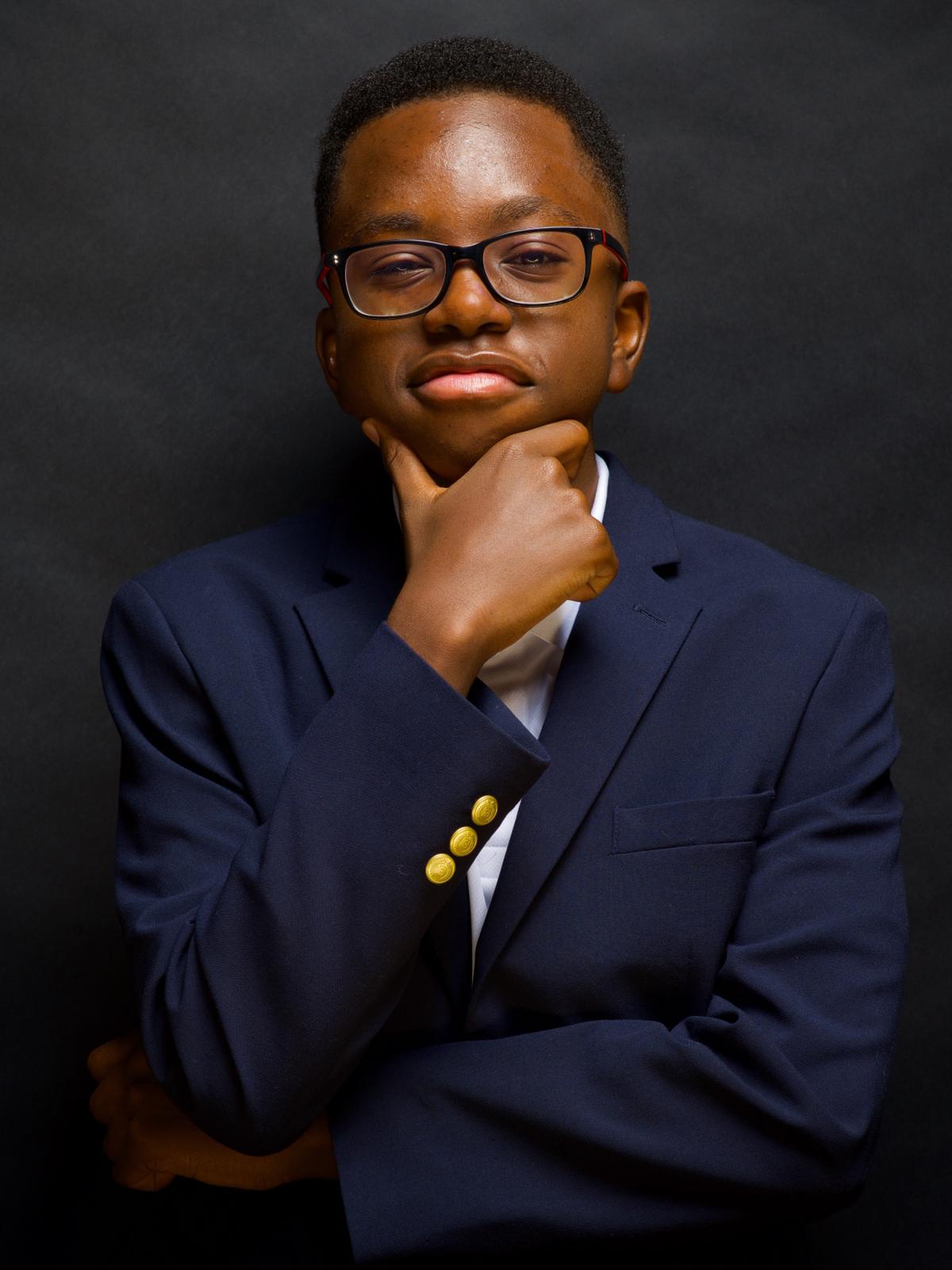
Hello, I’m Jocelyne. I serve on the youth leadership board with Omar, a high school junior from Paulding County, Georgia. Omar is the Social Media Manager for our program. He is an incredibly hard worker and is having an incredible college-bound journey. He joined the cohort program as a high school freshman after reading an article about Kimberly Hadaway, a College Planning Cohort alumni who graduated from his high school. He thought that it was amazing that she had been offered 6 full scholarships to some of the most prestigious colleges and universities in the country. However, what caught his eye in the article was that Kimberly, like himself, was a student of color from a single-parent, lower income family. He believed that if a student like him earn multiple full college scholarships, that he too, could seize the opportunity.
Kimberly’s story inspired him and her accomplishments motivated him to join the cohort and to commit himself to following all of the guidance offered by Mr. and Mrs. Wynn—after all, they were the experts who guided Kimberly. One of the first messages that resonated with him was that colleges are looking for more than just grades and test scores, so he committed himself to pursuing leadership opportunities and engaging in meaningful community service. He served as a College Planning Cohort intern and discussion group leader before applying for a position on the youth leadership board. He immediately had a community impact on the board through his mentorship of other first generation students and as a content creator for several video projects.
The projects that Omar has worked on have not only benefitted others and expanded the community outreach of the program, but have given him opportunities to, in his words,
Develop a ‘body of work’ to which I can refer in essays and interview that distinguish me from other applicants.” Clearly, the community impact that he has had through his leadership and service in our program has not gone unnoticed. He has been selected as a Yale Young Global Scholar, QuestBridge Scholar, and most recently, a LEDA Scholar. In his perspective: “It has been a mind blowing experience for me because it just shows that all the goals I set in 9th grade, and the pathway that I have taken due to the helpful, insightful, and crucial guidance from Mr. and Mrs. Wynn have come to fruition.”
Omar’s story is more than a success story, it is a story of believing that the example that Kimberly provided for him, that through his success, he can provide such an example from other students. Omar notes,
The cohort curriculum is full of the success stories of other students and provides a roadmap to the type of classes, grades, test scores, leadership, and service that can lead to full college scholarships. Rather than looking at these incredible students and saying, ‘I can’t be like them,’ everyone student should say, ‘Thank you for showing me the type of student that I should become if I want to be awarded a full college scholarship!
I believe that Omar has followed Kimberly’s example and that he is providing an example for others to follow. As Mr. and Mrs. Wynn frequently say, “Trust the Process.” I am inspired by how his incredible perseverance, and the cohort’s guidance, have driven him to be intentional in his actions to become a scholar in multiple prestigious programs. While Omar joined the program in hopes of being offered at least one full scholarship, he is now on a pathway to multiple full scholarship opportunities. We look forward to a followup article about Omar’s journey this time next year!
 As a current 9th grader, I am looking forward to sharing my own college-bound story in 2024. However, as the president of the youth leadership board, I am looking forward to submitting articles about our many cohort students and their accomplishments. Like my older sister, I am not only grateful to be participating in a program that is guiding us along pathways to full college scholarships, but supporting and encouraging us to grow into leaders who seek to have a community impact.
As a current 9th grader, I am looking forward to sharing my own college-bound story in 2024. However, as the president of the youth leadership board, I am looking forward to submitting articles about our many cohort students and their accomplishments. Like my older sister, I am not only grateful to be participating in a program that is guiding us along pathways to full college scholarships, but supporting and encouraging us to grow into leaders who seek to have a community impact.
Watch this space…I’m Jocelyne
On Her Way to Johns Hopkins
March 31, 2022On Her Way to Johns Hopkins
Jocelyne L. (St. Petersburg High School)
 Hello, I’m Jocelyne. I would like to tell you about my older sister, Joanne. My sister, a senior in the IB Program at St. Petersburg High School in St. Petersburg, Florida, has been offered admission, together with a full scholarship, to Johns Hopkins University. Johns Hopkins is one of the most selective schools in the US and is ranked #9 on the US News and World Reports National University Rankings (tied with Northwestern). Not only is Johns Hopkins her top choice school (where she will major in biology), but the scholarship is a huge blessing for our family. The only things not covered by her scholarship are indirect costs, such as travel expenses and personal expenses.
Hello, I’m Jocelyne. I would like to tell you about my older sister, Joanne. My sister, a senior in the IB Program at St. Petersburg High School in St. Petersburg, Florida, has been offered admission, together with a full scholarship, to Johns Hopkins University. Johns Hopkins is one of the most selective schools in the US and is ranked #9 on the US News and World Reports National University Rankings (tied with Northwestern). Not only is Johns Hopkins her top choice school (where she will major in biology), but the scholarship is a huge blessing for our family. The only things not covered by her scholarship are indirect costs, such as travel expenses and personal expenses.
My sister became involved in the cohort in her sophomore year after hearing me go on and on about how wonderful the program was. At the time, I was in the 7th grade and had just completed the Pinellas County Schools College Planning Boot Camp for Middle School Students. As a seventh grader, I could not join a cohort, but she could—and she did!
In interviewing her for this article, she noted,
Through my participation in the cohort, I learned so many things that I would not have learned anywhere else such as the differences between liberal arts colleges and research universities, where I should apply Early Decision versus Regular Decision, and the financial aid policies of all of my top choice colleges. Knowing that Emory, Rice, Stanford, Duke, UPenn, and the University of Chicago would have all offered comparable institutional scholarships, there was no need to apply regular decision to ‘see if I could get in’ when I had a clear top choice—Johns Hopkins. So after being offered admission, via Early Decision to Johns Hopkins, I withdrew all of my other applications.
My sister also mentioned that the information regarding financial aid, The Net Price Calculator, and how different colleges had different financial aid policies, provided clear guidance as to the colleges with the best financial aid policies for students from lower income families. As she researched and learned, she was able to create a plan personalized for her that helped with the next steps when applying for the college of her choice. Not only did the information provided through the online curriculum greatly expand her understanding of the college admission and financial aid processes, but she received amazing support from fellow cohort members, advisors, mentors, and alumni. Some of the college interns—Sydney Soskin (University of Chicago), Peyton Wilson (George Washington), and Loren Tsang (Williams College—to name a few, supported her in the process as they helped her understand the college admissions process and figure out if the college of her choice was a good balance between her aspirations and the educational opportunities offered. With their advice and answers to her questions, my sister was able to discover that Johns Hopkins was truly the college meant for her. However, prior to arriving at this realization, she had to figure out what type of college she wanted to pursue. The cohort provided insight into the nuances between liberal arts colleges and research universities, and which type of school provided the best fit to her body of work and benefited her the most with their opportunities. When she opened the email, “Congratulations, we are pleased to offer you admission to the Johns Hopkins University Class of 2026”my sister’s friends and our family were delighted to hear the great news. Although, we were not surprised, we were incredibly proud and amazed with the scholarship of $280,000 over four years!
I asked my sister what she would say to Mr. and Mrs. Wynn, the creators of the College Planning Cohort Program, and to Dr. Lewis Brinson, the Pinellas County Schools Minority Achievement Officer who brought the program to our school district:
Thank you so very much, your help has been a huge part of my college planning process and I would not have made it this far without you. Not only did you help me apply to college, but you helped me grow as a person!
 As a current 9th grader, I am looking forward to sharing my own college-bound story in 2024. However, as the president of the youth leadership board, I am looking forward to submitting articles about our many cohort students and their accomplishments. Like my older sister, I am not only grateful to be participating in a program that is guiding us along pathways to full college scholarships, but supporting and encouraging us to grow into leaders who seek to have a community impact.
As a current 9th grader, I am looking forward to sharing my own college-bound story in 2024. However, as the president of the youth leadership board, I am looking forward to submitting articles about our many cohort students and their accomplishments. Like my older sister, I am not only grateful to be participating in a program that is guiding us along pathways to full college scholarships, but supporting and encouraging us to grow into leaders who seek to have a community impact.
Watch this space…I’m Jocelyne
Understanding SAT Scores
March 16, 2020Finding Alternatives to Scholarships for Student Athletes
January 10, 2018Going to college on an athletic scholarship is a dream for many high school athletes, particularly if it means studying in and playing for their preferred school. However, statistics show that student athletes often find it difficult to receive full scholarships on athletic merits alone. Fortunately, alternative scholarships exist that allow students to receive their education while nurturing their athletic talents.
Statistics on Student Athletes
College athletic scholarships are a necessity for many student athletes. Majority of students and their families simply do not have the financial capacity to pay for a college education, considering that about 86% of athletes in college live below the poverty line. The average athlete playing for the NCAA pays around $3,000 in school-related costs every year. Any compensation they receive is usually given as cost-of-living stipends (ranging from $2,000 – $5,000 per year), hardship funds for emergencies and travel, and athletic scholarships. If the student’s family earns $35,000 a year, they can only contribute around $2,600 to cover for college costs annually. Compare this amount to annual college expenses that can easily top $20,000.
What Student Athletes Can Expect About Athletic Scholarships
A student athlete is not exactly guaranteed to receive a college education on an athletic scholarship. Even the numbers are not exactly encouraging. For example, an estimated 8 million students participate in athletics during high school. Of these, only around 500,000 will play at NCAA schools. From here, students hope to get a shot to compete in the major leagues but only a small percentage of college athletes will make the transition from NCAA to become professional athletes.
The NCAA Divisions
Colleges and universities are classified under one of three divisions in the NCAA or National Collegiate Athletics Association in the U.S. Of the three divisions, Division I or D-I is considered the highest intercollegiate athletics label under the NCAA. It includes 346 colleges and universities with 176,00 student athletes. Around 56% receive financial aid.
Division II or D-II, is represented by 307 colleges and universities. It has 118,000 student athletes, with 61% receiving athletics aid. By far the largest of the divisions is Division III or D-III, which includes 439 colleges and universities. This division has 187,000 student athletes, 82% of whom receive academic grants.
Typically, D-III schools are composed of smaller universities and private schools. As expected, the admissions requirements and academic levels expected from students are different from those required by D-I and D-II schools. Many of the most popular D-III schools are located in the Midwestern, Southern and Northeastern states.
Playing in the NCAA
Among high school seniors who play NCAA level basketball, only 3.3% are male and around 3.7% are female. Of these athletes, about 130,000 will be awarded either partial or full athletic scholarships. In 2008, an estimated 1 million young men played football in American high schools, and yet, around 28,000 of them were given a sports scholarship to pursue higher education in either a Division I or a Division II college.
A Look at the Figures
Many student athletes hope to receive a sports scholarship to get them through college but current figures suggest it may not always be enough. The average amount of athletic scholarship that a student can hope to receive is only around $10,400. If basketball and football are excluded, a student athlete can expect an athletic scholarship assistance to average at only around $8,700.
It is not a walk in the park for student athletes on sports scholarships, either. Once they become recipients of a sports scholarship, students are expected to work to keep it. Athletes who play for Division I colleges, for example, spend plenty of time in the court or on the field. Student athletes who play football, baseball and basketball can expect to spend as much as 40 hours a week playing, practicing and competing.
Why Choosing Division III Schools is a Good Option
Student athletes who attend D-III schools are not as focused on sports as students who pursue their education at D-I and D-II schools. Many student athletes who compete under the D-III banner do so because they love the sport and relish the competition. The prestige of playing for major D-I and D-II colleges and universities may not be present, but student athletes still enjoy an exciting learning environment where they can pursue higher education while participating in the sport they excel at. D-III schools host a wide number of sports, including the more popular ones such as basketball, baseball, volleyball and football, and less popular sports such as bowling, water polo, rowing and ice hockey.
Benefits of Playing for Division III Schools
Division III is like the youngest sibling in the NCAA and yet, it has become the largest college sports division. It currently has the most number of institutions and student athletes under its wing. In spite of these figures, Division III schools are viewed as the institutions where student athletes who failed to make the senior high school varsity team enroll in. The truth is that students go to Division III colleges may have different priorities and access to opportunities. Due to less pressure in upping their sports performance to keep a scholarship, D-III student athletes can focus on both academics and their preferred sport while interacting with other students in a community-like environment.
The main difference about Division III colleges and universities is that they do not grant athletic scholarships. As such, students who enroll in these schools need to build their credentials based on other forms of merit and not just in sports. Although sports-based financial aid is not available, students can expect to receive financial aid to cover their education costs via needs-based assistance and leadership grants. As such, student athletes with very good showing in academics and have other key accomplishments can still expect excellent financial support from these schools.
D-III schools are considered the lowest level in terms of competition but many D-II level and even D-I level athletes are enrolled here. Although some student athletes prefer D-III schools for the academics, many also consider the overall aid package these schools offer to be better. In fact, some D-III schools offer academics-based merit awards and other accomplishment-based aid that could reduce tuition costs by as much as 100%. In all, D-III schools offer both financial and academic awards that many student athletes prefer.
To learn more about the infographic created by Ohio University’s Online Masters in Coaching program.
Source: Ohio University
ACT – SAT Conversation Table
October 22, 2017College Greenlight
June 29, 2015We are a Community-Based Organization Partner with College Greenlight. Our students in Georgia, South Carolina, Texas, and Washington use their College Greenlight Profile to connect with colleges and scholarship providers.
Student Profile: Mikayla H., Class of 2015
May 26, 2015
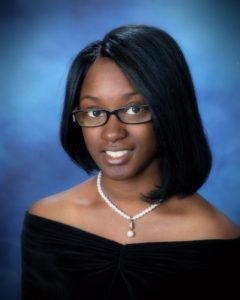 Mikayla H. Mikayla H.Lake City High School Stats: Activities: | |
| Accepted: Claflin University Honors College Clemson University Howard University University of Maryland – Baltimore County University of South Carolina – Columbia Worcester Polytechnic Institute Xavier University of Louisiana
Wait List: College Choice: | Denied: Columbia Cornell Davidson College Smith College Swarthmore Vassar Williams College Yale
Major Scholarships: Total Scholarship Offers: |
| What type of college did you want and why? Attending a college with a good science program was the most important part of the college experience for me. Secondarily, I wanted to attend a large university which is the complete opposite of my high school, but I thought it would be a good change for me. I wanted to attend a highly selective college, because they typically have more generous need-based financial aid policies. | |
| What type of support did you receive during the college admissions process? Mr. and Mrs. Wynn guided me each step of the way through the college admissions and financial aid processes. They introduced me to the QuestBridge Program, the Gates Millennium Scholars Program, and the Meyerhoff Scholars Program. They helped me research colleges and programs that best suited me as a person and guided me through the process of researching the grades and test scores I would need to be a competitive candidate for admission. Mrs. Wynn also helped me to prepare for my interviews with Yale, Cornell, Columbia, and the Meyerhoff Scholars Selection Weekend. The attorney from Yale Law School said that I was the best student he had ever interviewed, and I was one of only small group of students accepted into the prestigious and highly competitive Meyerhoff Scholars Program. They also helped me research scholarships and helped me through the process of completing the FAFSA. I also got help from my high school Guidance Counselors when submitting documents and help from teachers for proof reading and reviewing my work. | |
| What was most stressful about applying to colleges? The most stressful part about applying to colleges was knowing that my test scores were just not up to par for some of the colleges that had the type of need-based financial aid policies. While my grade point average met the expectations of all of the colleges on my list, my 25 ACT Composite score was much lower than the median for such schools as Yale, Vassar, Swarthmore, and Williams, all of which rejected me—this after completing their lengthy applications and responding to all of their writing prompts. | |
| What did you learn? I learned that although a college may be selective and highly ranked, there are other colleges with great programs that can be just as good or better than a highly selective college. I also learned how important it is to have a great overall ‘Self-Presentation!’ Mr. and Mrs. Wynn helped me to put all of the pieces together, essay, résumé, recommendation letters, interviewing skills, and communication with all of my colleges. | |
| The Money Factor! Thanks to the help of Mr. and Mrs. Wynn, my guidance counselors and many teachers, I have been selected as a 2015 Gates Millennium Scholar —the first one from the Florence County School District Three and the town of Lake City, South Carolina. GMS funding will help pay for 5 years of undergraduate school, 2 years of graduate school, and 4 years of my doctoral program. | |
| What do you wish you had done differently? I wish I would have known to prepare earlier to get higher test scores so I could have gotten into more of the highly selective colleges. | |
| What is your advice? My advice is to begin researching colleges as you enter high school so you will know the grades and test scores expected by the colleges. Also, do as much community service as possible, become a leader throughout high school, and take as many of the college courses and AP courses offered at your school. Your grades and coursework will be extremely important in making you a competitive candidate for admission at highly selective colleges and may qualify you for thousands of dollars in scholarships. Finally, get help! The college admissions and financial aid processes are hugely complicated. Without the support and guidance of our College Planning Cohort, I would not have reached beyond Clemson and the University of South Carolina. I have already experienced more in the Meyerhoff Scholar Summer Bridge Program at the University of Maryland-Baltimore County than in my wildest dreams. By the time I actually begin my freshman year, I will have visited the National Institutes of Health, Johns Hopkins Medical Center, the U.S. Army Research Center, laid out my 4-year course schedule, and prepared my internship application for my summer internship between my freshman and sophomore year. My Advice is, “Don’t try to do this by yourself!”
| |
Starting a College Planning Book Club
April 17, 2014 Activity: Starting a College Planning Book Club
Activity: Starting a College Planning Book Club
Through our work with schools and school districts throughout the United States and in Bermuda we are providing important college admissions and financial aid guidance to thousands of students and parents. However, there are simply too many students and families continuing to lack access to sufficient college planning information within their schools and communities. Subsequently, we were inspired by Patrick Johnson, Director of Equity and Excellence, in the Tacoma Public Schools, and his work in creating book clubs for elementary and middle school students.
Click here to see the Tacoma Public Schools Book Club video: https://www.youtube.com/watch?v=5lbajG6XSb8
We have followed Patrick’s lead and now support College Planning Book Clubs in schools, churches, and communities throughout the country to ensure that more students and families have access to important college admissions and financial aid planning information.
In addition to the foundational texts, A High School Plan for Students with College-Bound Dreams (book and workbook), used to begin each book club, we provide monthly activities to guide the reading and research of book club members. In addition to the Starting a College Planning Book Club activity that you may download to guide your efforts in starting a book club, following are some of the activities that book clubs have received during 2014 to guide their efforts.
Activity 1: A Context for the Conversation
Objective
Develop a context for the many conversations that will occur between you, the student, and your parents, teachers, counselors, coaches, mentors, tutors and anyone assisting you with conceptualizing your college-bound plans.
Guiding Questions
- What is my plan to maximize my 2 million minutes of high school?
- What is my anxiety level based on where I am in the college planning process?
Activity 2: My Student Profile
Objective
Develop a student profile to focus your college and financial aid research.
Guiding Questions
- What is my current student profile?
- How can I compare my profile to those of other students?
- How can I use my profile to guide my scholarship research?
Activity 3: High School Graduation Requirements
Objective
Ensure that you are fully aware of your progress toward fulfilling your state high school graduation requirements and that you understand the requirements for state sources of financial aid.
Guiding Questions
- What are my state’s high school graduation requirements?
- What are the course requirements for admission into the state university system?
Activity 4: Self-assessment—My Gifts and Talents
Objective
Perform a self-assessment of your gifts and talents and identify those areas that may be further developed during high school to qualify for merit-based scholarships or to expand your college admission opportunities.
Guiding Questions
- What are my gifts and talents and am I working hard enough to develop them to the level necessary to influence college admissions and scholarship opportunities?
- Am I maximizing opportunities within my school and community to develop my gifts, earn recognition, and serve in leadership roles?
Activity 5: Whom Do I Need on My Team?
Objective
Determine the college planning support you currently have or will need.
Guiding Questions
- How competitive will it be to gain admission into top colleges?
- How much work will be required to develop a high quality college application package?
- Who are the people or what are the programs from which I will require support?
Activity 6: Developing My College List
Objective
Develop a list of colleges that will provide the context for your college planning activities and conversations.
Guiding Questions
- What type of college, i.e., large institutions, liberal arts, highly competitive, special focus schools (e.g., visual arts, music, theatre arts, HBCUs, military service academies, etc.) community colleges, or technical schools would I like to attend?
- Where can I research information about the colleges on my list and identify similar types of colleges?
- What are the benefits of pre-college programs, Honors Colleges, and Study Abroad programs?
Activity 7: Self-reflection and Self-assessment
Objective
Engage in a self-reflective and honest self-assessment of your level of competitiveness in the college admissions and scholarship application processes.
Guiding Questions
- How do I compare to the type of students who apply to the colleges on my list?
- What is the Common Data Set?
Activity 8: AP, IB, and Dual/Joint Enrollment
Objectives
- Understanding the impact of Advanced Placement (AP), International Baccalaureate (IB), and Dual/Joint Enrollment on college admissions.
- Understanding how to research the potential tuition savings of AP, IB, and Dual/Joint Enrollment classes.
Guiding Questions
- What are the AP, IB, and Dual/Joint Enrollment options at my high school?
- Which program is most closely aligned with my college and career aspirations?
- What are the potential tuition savings for each program?
Activity 9: Course Work and Teacher/Counselor Evaluations
Objectives
- Developing your high school course schedule.
- Identifying what will be required to receive the highest teacher/counselor evaluations.
Guiding Questions
- What level of course work is expected by the colleges and universities to which I am planning to apply?
- What type of academic assistance is available to support my enrollment in the classes I am planning to take?
- What personal qualities will my teacher and counselor be evaluating?
Additional college planning book club activities will be posted as they are released.
Kenessaw State Summer Camps
January 13, 2014
The Summer University experience is an engaging combination of learning and enjoyment. Each summer, our courses are designed to give students an opportunity to explore their creativity, challenge their minds and build new friendships. From rising 1st graders to 12th graders, there are courses for every age!
The setting and subjects are academic, and the tone and atmosphere is lively and fun! Choose a summertime activity for your kids that fills their free time with hands-on learning opportunities, entertainment and camaraderie. Whatever the age, whatever the interest, there are SummerU classes that meet the needs of your kids.
Extended Care Camp is available until 6:00pm. Campers will be provided with a healthy snack and several choices of activities to extend the fun of their camp day.
Note: When registering a child for a class, be certain that you use the child’s name and ID, not your own.
Behavior Management Guidelines
Summer University Webinar April, 2016
Disney Dreamers Academy
December 25, 2013 The Disney Dreamers Academy is a 4-day, power-packed event in which 100 select high school students, ages 13-19, are inspired, motivated and prepared to dream big. Disney Dreamers experience:
The Disney Dreamers Academy is a 4-day, power-packed event in which 100 select high school students, ages 13-19, are inspired, motivated and prepared to dream big. Disney Dreamers experience:
- Inspirational guest speakers with immersive presentations
- Career activities ranging from animation, journalism and entrepreneurship, to culinary arts and zoology
The Disney Dreamers Academy takes place at the Walt Disney World® Resort in Orlando, Florida. Conducted on stage and behind the scenes, the theme parks become vibrant “classrooms” where Dreamers imagine bright futures, make exciting discoveries and learn how to put their plans into action.
Dreamers are creative, eager to learn and dedicated to pursuing their dreams with passion. If you have what it takes and you are between the ages of 13-19, you live in the United States of America and you are enrolled in high school grades 9-12 when entering, apply here!
Disney seeks students with a winning combination of attributes that reflect strong character, positive attitude, and persistence to take advantage of opportunities.
Key Attributes:
- Intellectually curious – Creative and quick-witted
- Compassionate – Gives to others who need their assistance
- Courageous – Overcomes obstacles, brave, spirited, survivor
- Leader – The “go-to” person, pursues ideas with passion
Attitude:
- Dreams about their future
- Positive approach to life
- Grateful and humble
- Takes advantage of resources
Does this sound like someone you know? We’re looking for Dreamers for next year’s Disney Dreamers Academy, so they can get the tools to help make their dreams come true. Follow the Dreamers Academy on Facebook and Twitter for updates.


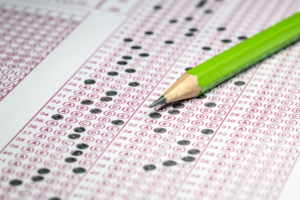 The SAT is one of two tests used for college admission. Most colleges use SAT scores as a part of the college admissions process. SAT scores, in conjunction with high school grades, are thought to be a strong predictor of college success.
The SAT is one of two tests used for college admission. Most colleges use SAT scores as a part of the college admissions process. SAT scores, in conjunction with high school grades, are thought to be a strong predictor of college success.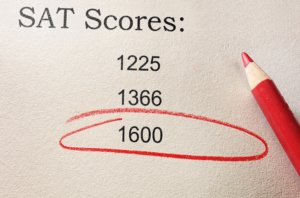
 If you took the SAT and you felt that you did not do your best, you have several options.
If you took the SAT and you felt that you did not do your best, you have several options.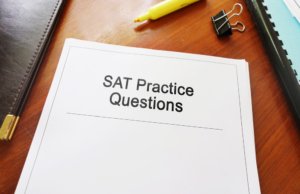 While there are no shortcuts, here are some strategies to help you score higher on your first SAT attempt:
While there are no shortcuts, here are some strategies to help you score higher on your first SAT attempt:






